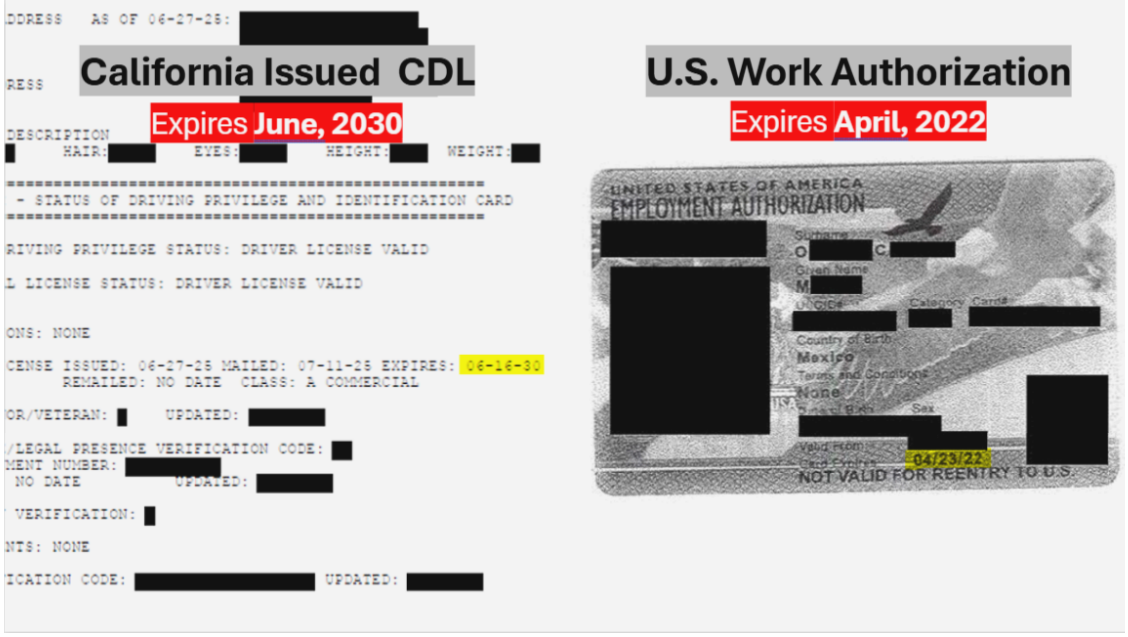2025 Update: New Federal Rule for Non-Citizen Truckers and CDLs

Recently, a fresh federal rule came down, and it is already making waves across the trucking industry. On September 26, 2025, U.S. Secretary of Transportation Sean Duffy announced an emergency federal rule that immediately changes who can legally hold a non-domiciled commercial driver’s license (CDL).
So, what is the point of this rule? In short, it is designed to strengthen safety on American roads by making sure that every driver holding a non-domiciled CDL is properly documented, legally authorized to work, and fully verified.
Why the Rule Was Needed
According to Secretary Duffy, a nationwide audit revealed serious problems in how some states issued non-domiciled CDLs. States named included California, Colorado, Pennsylvania, South Dakota, Texas, and Washington.
California had the highest number of errors, with more than 25% of non-domiciled CDLs issued improperly, including to drivers no longer legally allowed in the U.S.
You May Also Like: Imported Truck Prices May Soon Change: What It Means for Fleets

The discovery led the Department of Transportation to take emergency action. All states are now required to pause issuing new non-domiciled CDLs until their systems meet stricter federal safety standards.
States have 30 days to comply or risk losing $160 million in federal highway funding, with the penalty doubling if non-compliance continues into a second year.
What the Rule Means for Truckers
This rule directly affects non-U.S. citizen drivers. Anyone holding or applying for a non-domiciled CDL must now meet much stricter federal requirements:
- Provide proof of an employment-based visa. Work authorization alone is no longer enough.
- Pass mandatory immigration status checks through the federal SAVE system.
- Accept shorter CDL validity periods. Licenses will expire when the visa or I-94 does, or after one year, whichever comes first.
- Renew licenses in person only. Mail or online renewals are not allowed.
- Face immediate revocation or downgrade if visa status changes or expires.
The DOT’s goal is clear. No longer can foreign drivers obtain CDLs through states with weak oversight. Every non-domiciled driver must be fully documented, verifiable, and legally authorized to work.
You May Also Like: FMCSA Announces Pilot Programs to Enhance Hours-of-Service Flexibility
Industry Response and Real-World Impact
The announcement has sparked mixed reactions across the industry. The American Trucking Associations (ATA) expressed cautious support, emphasizing that the rule improves safety and compliance. Meanwhile, OOIDA and independent drivers said the action was long overdue, pointing out that previous loopholes allowed unsafe or unqualified drivers on U.S. roads.
The rule also has potential consequences for the driver market. With nearly 200,000 non-domiciled CDL holders affected, fleets may experience driver shortages, and supply chains could face slowdowns. Carriers that rely on immigrant drivers are already preparing for disruptions. At the same time, safety advocates argue the rule is necessary to protect families and restore trust in the CDL system.
For truckers, the message is simple. If you are not a U.S. citizen, check your paperwork now. Ensure your visa, I-94, and licensing status meet the new federal standards. Failing to comply could mean being sidelined and losing your ability to drive.












